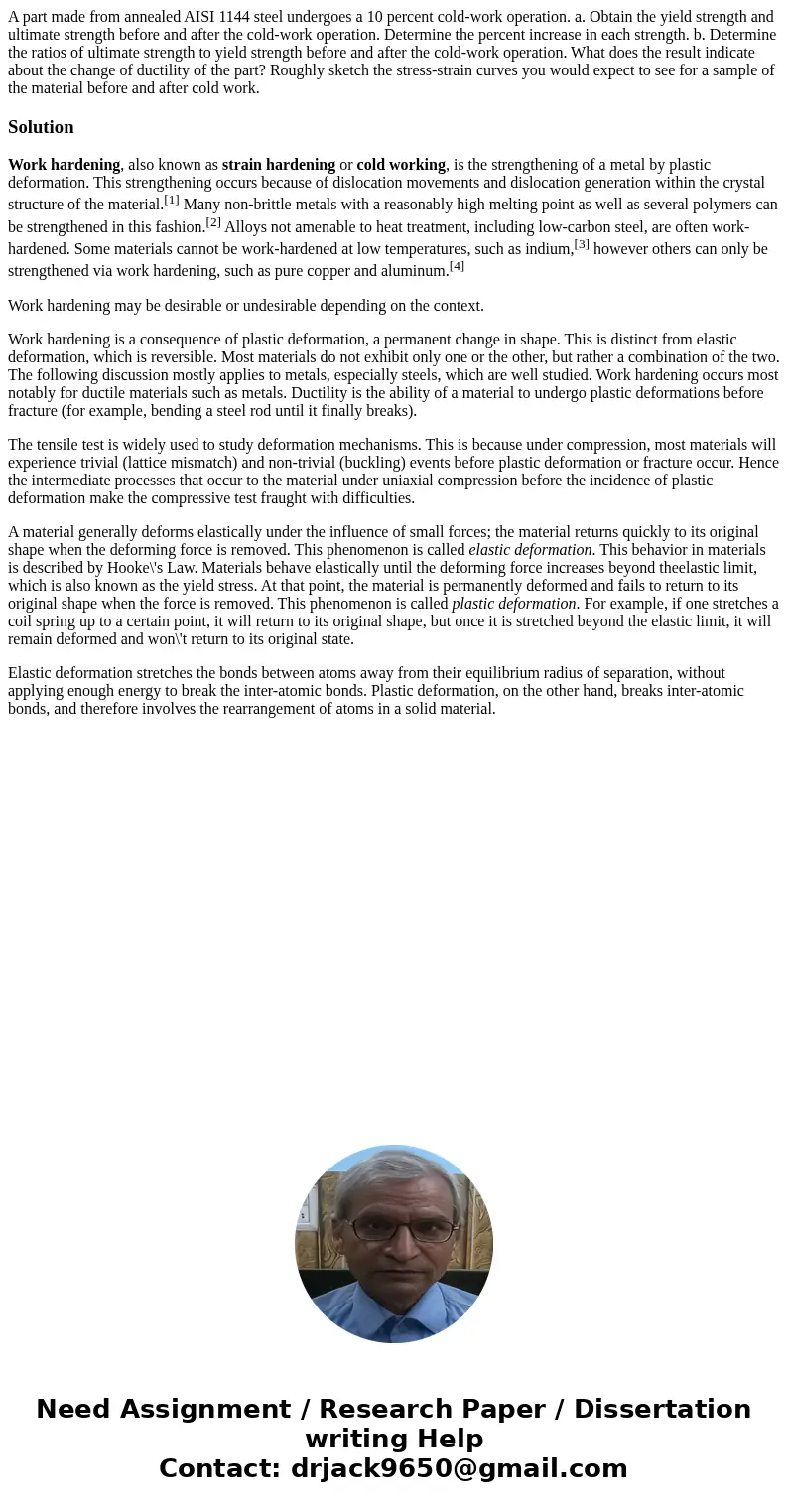A part made from annealed AISI 1144 steel undergoes a 10 per
Solution
Work hardening, also known as strain hardening or cold working, is the strengthening of a metal by plastic deformation. This strengthening occurs because of dislocation movements and dislocation generation within the crystal structure of the material.[1] Many non-brittle metals with a reasonably high melting point as well as several polymers can be strengthened in this fashion.[2] Alloys not amenable to heat treatment, including low-carbon steel, are often work-hardened. Some materials cannot be work-hardened at low temperatures, such as indium,[3] however others can only be strengthened via work hardening, such as pure copper and aluminum.[4]
Work hardening may be desirable or undesirable depending on the context.
Work hardening is a consequence of plastic deformation, a permanent change in shape. This is distinct from elastic deformation, which is reversible. Most materials do not exhibit only one or the other, but rather a combination of the two. The following discussion mostly applies to metals, especially steels, which are well studied. Work hardening occurs most notably for ductile materials such as metals. Ductility is the ability of a material to undergo plastic deformations before fracture (for example, bending a steel rod until it finally breaks).
The tensile test is widely used to study deformation mechanisms. This is because under compression, most materials will experience trivial (lattice mismatch) and non-trivial (buckling) events before plastic deformation or fracture occur. Hence the intermediate processes that occur to the material under uniaxial compression before the incidence of plastic deformation make the compressive test fraught with difficulties.
A material generally deforms elastically under the influence of small forces; the material returns quickly to its original shape when the deforming force is removed. This phenomenon is called elastic deformation. This behavior in materials is described by Hooke\'s Law. Materials behave elastically until the deforming force increases beyond theelastic limit, which is also known as the yield stress. At that point, the material is permanently deformed and fails to return to its original shape when the force is removed. This phenomenon is called plastic deformation. For example, if one stretches a coil spring up to a certain point, it will return to its original shape, but once it is stretched beyond the elastic limit, it will remain deformed and won\'t return to its original state.
Elastic deformation stretches the bonds between atoms away from their equilibrium radius of separation, without applying enough energy to break the inter-atomic bonds. Plastic deformation, on the other hand, breaks inter-atomic bonds, and therefore involves the rearrangement of atoms in a solid material.

 Homework Sourse
Homework Sourse